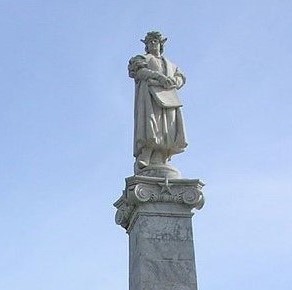Browse
Slavery

Review
Digital Library of the Caribbean
Educators, students, and scholars interested in understanding the strategic conflicts between European powers, the experience of Africans during the transatlantic slave trade, the emergence of the modern capitalist system, and the rise of neoliberalism would find in dLOC a wealth of content to draw
Review
Freedom on the Move
Freedom on the Move is a crowdsourced, multi-institutional effort to create and maintain a database of ‘runaway ads’.
Teaching
Short Teaching Module: Controversial Historical Monuments
I use images of three historical statues that triggered controversy beginning in the 2010s to teach about the concept of contested historical memory and to have students consider parallels and differences among public history controversies in different parts of the world.

Source
Christopher Columbus monument, Buenos Aires, Argentina
The Monument to Christopher Columbus (1451?-1506), located in a plaza in front of the Casa Rosada government palace, was inaugurated in 1921.

Source
Stonewall Jackson monument removal, Richmond, Virginia, United States
The Stonewall Jackson Monument in Richmond, Virginia was erected in 1919 to honor Thomas ‘Stonewall’ Jackson (1824-1863), a Confederate general.

Source
Stonewall Jackson monument, Richmond, Virginia, United States
The Stonewall Jackson Monument in Richmond, Virginia, was erected in 1919 to honor Thomas ‘Stonewall’ Jackson (1824-1863), a Confederate general.

Review
Enslaved Archive
The site also contains narratives and photographs of twelve slave interviews conducted as a part of the Federal Writers Project in 1937.
Review
Slave Societies Digital Archive
By giving endangered historical records a permanent (digital) home, it plays an invaluable role in ensuring that the lives and stories of millions of African men, women, and children who suffered the indignities of the Atlantic slave trade will not be lost to the ravages of time.
Review
Beyond the Bubble
Beyond the Bubble is a fantastic initiative that provides educators with an array of thoughtful and easily implementable history assessments.
Review